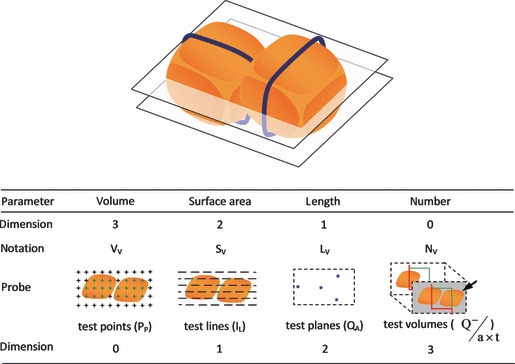Stereology gives a quantity of instruments for the evaluation of sections in microscopy (which often present solely two-dimensional info) for the function of estimating geometric portions, corresponding to quantity, floor space, size or quantity of particles (cells or different constructions). The use of these instruments permits restoration of the three-dimensional info that’s inherent in organic tissues.
This review makes use of the liver as a paradigm for summarizing the mostly used state-of-the-art strategies for quantitation in design-based stereology. Because it’s typically related to distinguish hyperplasia and hypertrophy in liver responses, we additionally deal with potential pitfalls in the sampling and processing of liver specimens for stereological functions, and assess the present strategies for quantity and quantity estimation.
With respect to quantity, we thought-about complete liver quantity (V), quantity density (V(V)) and so-called native volumes, together with the number-weighted quantity (V(N)) and the volume-weighted quantity (V(V)). For quantity, we thought-about the complete quantity (N) and the numerical density (N(V)).
If appropriately utilized, present stereological strategies assure that no bias is launched in the estimates, which will probably be subsequently correct; moreover, strategies will be tuned for acquiring exact quantitative estimates that may reveal delicate modifications in the quantity or quantity of chosen hepatic cells. These strategies have already detailed the results of some substances and particular diets on the liver, and ought to be routinely included in the toolbox of liver analysis.
Digital stereology in neuropathology.
Two-dimensional quantitative strategies have regularly been used to tackle questions in neuropathological analysis; nonetheless, they face vital limitations which design-based stereology might overcome by providing a set of strategies to quantify two-dimensional histological sections into three-dimensional structural data.
Accordingly, stereology is a science primarily based on statistical sampling rules and geometric measures. The utility of stereology to neuropathological research permits the researcher to effectively acquire a exact estimate of numerous structural portions. This neuropathological review will subsequently current the related stereological estimators for acquiring dependable quantitative structural knowledge from brains and peripheral nerves when utilizing digital gentle microscopy. It is mentioned how to acquire mind and nerve fibre samples to fulfil the necessities for the estimators.
A presentation of design-based stereological probes for acquiring world quantity, complete quantity, native quantity, complete size, complete floor space, cross-sectional space and diameter will probably be adopted by dialogue of the error variances of the strategies. No mathematical equations or calculations are proven in this review.

